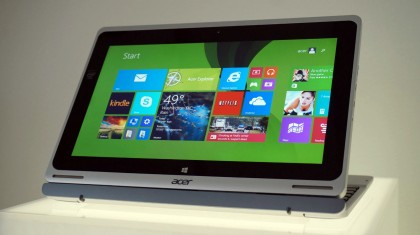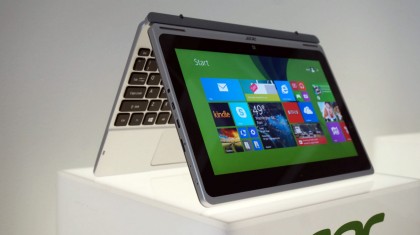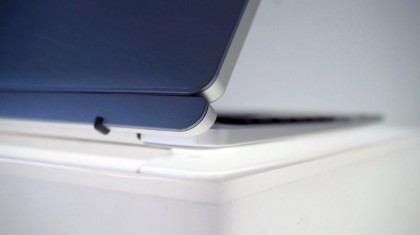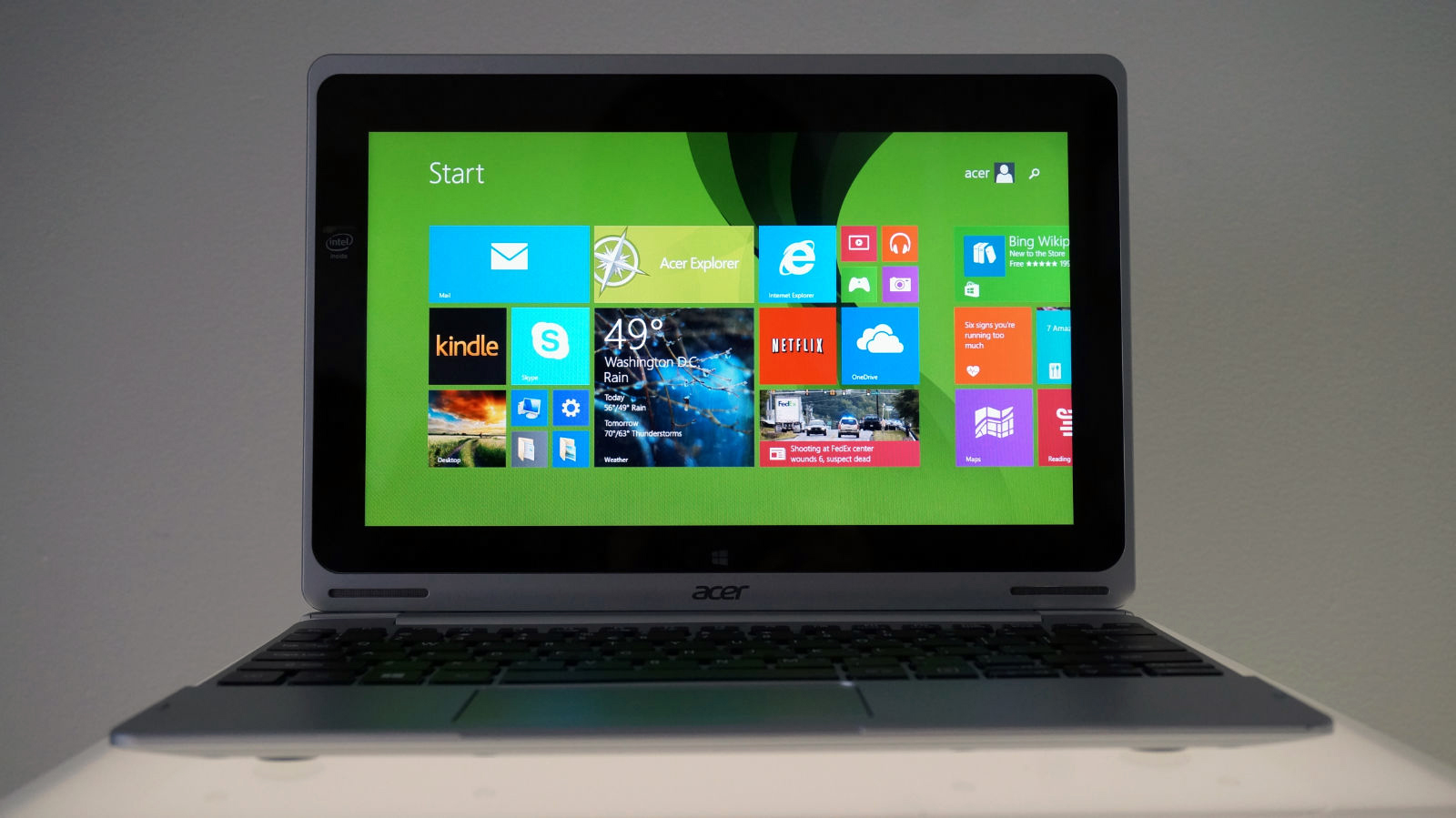TechRadar Verdict
An affordable hybrid tablet with reasonable battery life that's a solid choice for basic tasks.
Pros
- +
Solid battery life
- +
Vibrant screen
- +
Nicely priced
Cons
- -
Cheap build quality
- -
Unimpressive benchmark scores
- -
Acer bloatware
Why you can trust TechRadar
The Acer Aspire Switch 10 is a hybrid tablet, with a 10.1-inch screen and a detachable keyboard dock. Although its £299 price tag puts it in the same ballpark as many ARM-powered Windows RT tablets, it comes with the 32-bit version of full-fat Windows 8.1, so can happily run any x86 application, from Microsoft Office to old LucasArts games, just as Microsoft's more expensive Surface tablet can. And of course, it can either be fully operated via touch, or docked and used with a physical keyboard and trackpad.
There's more. It's based on Intel's Bay Trail platform, which (for a tablet) provides reasonably high performance, with power consumption that's finally approaching ARM-like levels. It's this combination of low-power chipset and processor that allows Windows 8.1 to run at all, without inflating either its price tag or power consumption to levels that severely detract from its capability as a mobile device.
The processor is a quad-core Intel Atom Z3745, with a clock frequency of 1.33GHz. There's 2GB of memory and it comes with either 32GB or 64GB of solid-state storage.
Bay Trail is an interesting platform, as it represents Intel's strongest push yet for a slice of the tasty profits in the tablet market, where the company's current share is effectively irrelevant. While Intel is inside the vast majority of desktops and laptops, any attempt to make significant inroads into the smartphone or tablet space has so far proven a failure – and that's a segment which has grown at the expense of traditional PCs, and therefore is a serious threat to the firm's bottom line.

Design
In many ways, hybrid tablets are a close relative of netbooks. If you're really young, or just have an exceptionally poor memory, netbooks were an insanely popular laptop form factor about five years ago, that were selling like hotcakes, at least until tablets came along and pushed them off the shelves.
They were affordable and highly portable, but not particularly well-built or capable of a great computing experience. That's an uncharitable view of both netbooks and the Aspire Switch 10. From the moment you remove the Switch 10 from its packaging, you're reminded that Acer's goal has been affordability over anything else. There's a huge ugly sticker right on the front bezel, with an Intel Inside logo and diagram to show how many operating modes the tablet supports. Its removal should be the first thing any self-respecting Switch 10 owner does.
The silver plastic shell looks okay, but it's made from plastic that feels cheap and hollow. When the keyboard and tablet are docked together, and closed shut, like a laptop, it's not particularly thin or light. Both the tablet body and keyboard dock bend easily with a minimal amount of pressure applied to them, and the trackpad feels clunky, and it almost wobbles under your finger. It does, however, let you swipe through the Modern UI screens in Windows and through web pages.

Smart screen
And the screen is fairly good for an affordable tablet. Bright and vibrant, with good colours and wide-angle viewing, when the machine first powers on, you'll perhaps forget the questionable build quality when you see how good the Windows desktop looks.
The desktop resolution is only 1366 x 768, so it isn't high-DPI like the iPad or high-end Android tablets, but that's actually welcome, given how Windows 8 doesn't always behave itself when running desktop software at super-high resolution on small screens. The bezel around it is unfortunately quite large, with both a black border and the outer shell taking up space.
There's five-point multitouch, and the Switch 10 flicks through the modern UI screens and apps absolutely fluidly. A tap in the top left switches through the open apps without any delay, and pinch-to-zoom is nicely responsive.
Solid keyboard
The keyboard is undoubtedly superior to the trackpad, with a reasonable key travel distance that makes typing relatively pain-free. The keys are a bit small though, one of the complaints many people had regarding netbooks.
The extra thickness of the dock accommodates a single full-sized USB 2.0 port, but on the tablet there's not enough space for one, so instead you get a microUSB port on the right-hand side, for which you'll need an adaptor, with microHDMI as well. Finally, there's a microSD card slot and microphone. The power button and volume controls are located on the left-hand side.
As expected from Acer, there's plenty of bloatware installed on the device, including their own App Store in Modern UI. On the 32GB Switch 10 I received, Windows reports the C drive as 22.3GB, with only 7GB remaining for the user's programs and media.

Snap!
Being a hybrid, the selling point is the detachable keyboard. Many people don't get on with touchscreen keyboards at all, mainly due to the lack of feedback with key presses. Even using a third-party software keyboard such as Swype is no replacement for physical keys when writing large documents.
The hybrid device therefore has a place in the market. You can carry it around without the dock for watching movies on long journeys, or place it in the dock when you need to work. It's a nice idea, but then again, there are numerous physical Bluetooth keyboards for the iPad and Android tablets as well, not to mention numerous hybrid Android devices.
Extremely strong magnets attach the Swipe 10 tablet to its dock, with a reassuringly loud click when they're united. You can also flip the tablet around and position the device in the fairly pointless vertical 'tent' mode (Acer's awful term, not mine) where the tablet is like an inverted V shape, connected to the dock.
